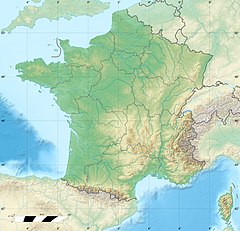
Quimper is a commune and prefecture of the Finistère department of Brittany in northwestern France.

Pont-l'Abbé is a commune in the Finistère department of Brittany in north-western France.

The arrondissement of Châteaulin is an arrondissement of France in the Finistère department in the Brittany region. It has 57 communes. Its population is 82,403 (2016), and its area is 1,756.6 km2 (678.2 sq mi).
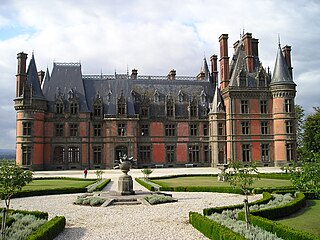
Saint-Goazec in commune in the Finistère department of Brittany in northwestern France.
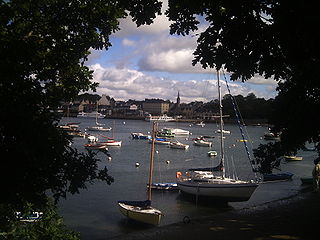
Bénodet is a commune in the Finistère department and administrative region of Brittany in north-western France. It lies about 16 kilometres south of Quimper. The Breton name Benoded means "mouth of the Odet".

Plomelin is a commune in the Finistère department of Brittany in north-western France.

Ergué-Gabéric is a commune in the Finistère department of Brittany in north-western France. It lies on the Odet river. The businessman and publisher Gwenn-Aël Bolloré was born in the commune.

Fouesnant is a commune in the Finistère department of Brittany in north-western France. Fouesnant is bordered to the south by the Baie de La Forêt.
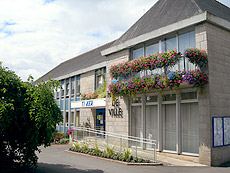
Briec is a commune in the Finistère department in the region of Brittany in north-western France.
The Canton of Briec is a French canton, located in the arrondissement of Quimper, in the Finistère département. Since the French canton reorganisation which came into effect in March 2015, the communes of the canton of Briec are:
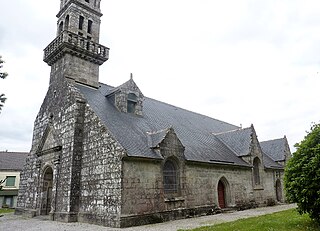
Roudouallec is a commune in the Morbihan department of Brittany in north-western France. Inhabitants of Roudouallec are called in French Roudouallecois.

Gouesnac'h is a commune in the Finistère department and administrative region of Brittany in north-western France.

Spézet is a commune in the Finistère department of Brittany in north-western France.

Serge Duigou is a French historian, specialising in the history of Brittany. His work focuses on Breton maritime history, the women's place in the Breton society, the links between Brittany and modernity, the migratory movements from and to Brittany, the Breton popular revolts. His numerous conferences aim to make Breton history known to as many people as possible.

Pointe de la Torche is a promontory located at the southeastern end of the Baie d'Audierne in the commune of Plomeur in the Bigouden region of Finistère, France. It is an officially recognised natural site and at the top of the promontory is a prehistoric settlement and burial site that is registered as a historic monument.

The Saint-Bélec slab is a stone artefact from western Brittany thought to be a map of an early Bronze Age principality. It was discovered by Paul du Châtellier in a prehistoric burial ground in Finistère, where it formed part of an early Bronze Age cist structure. Du Châtellier kept the slab at his house, the Château de Kernuz, before it came into the collection of the National Archaeological Museum. It was forgotten until 2014 when it was rediscovered in the cellar of the château. A 2017–2021 study by French and British universities and institutes identified the slab as an early Bronze Age map of part of the Odet valley. The slab is the earliest known map found in Europe and probably the earliest map of any known territory.
Paul du Châtellier was a French prehistorian.
The Bulletin de la Société préhistorique française is a French quarterly review published by the Société préhistorique française, the French Prehistoric Society. It has been published continuously from 1904 to the present day.
The Armorican Tumulus culture is a Bronze Age culture, located in the western part of the Armorican peninsula of France. It is known through more than a thousand burial sites covered by a tumulus or otherwise. The culture is renowned for some exceptionally richly endowed burials of chieftains of the time, which are contemporary with the elite of the Wessex culture, in England, and the Únětice culture, in Central Europe.

Saint Herbot, also called Saint Herblon and Saint Hermelan, is one of the semi-legendary Breton saints, not officially recognized by the Catholic Church. His cult was very popular among Breton peasants, who saw in him a protector of horses and horned animals. There is a life of him in Latin, the Vita Herbaudi.

